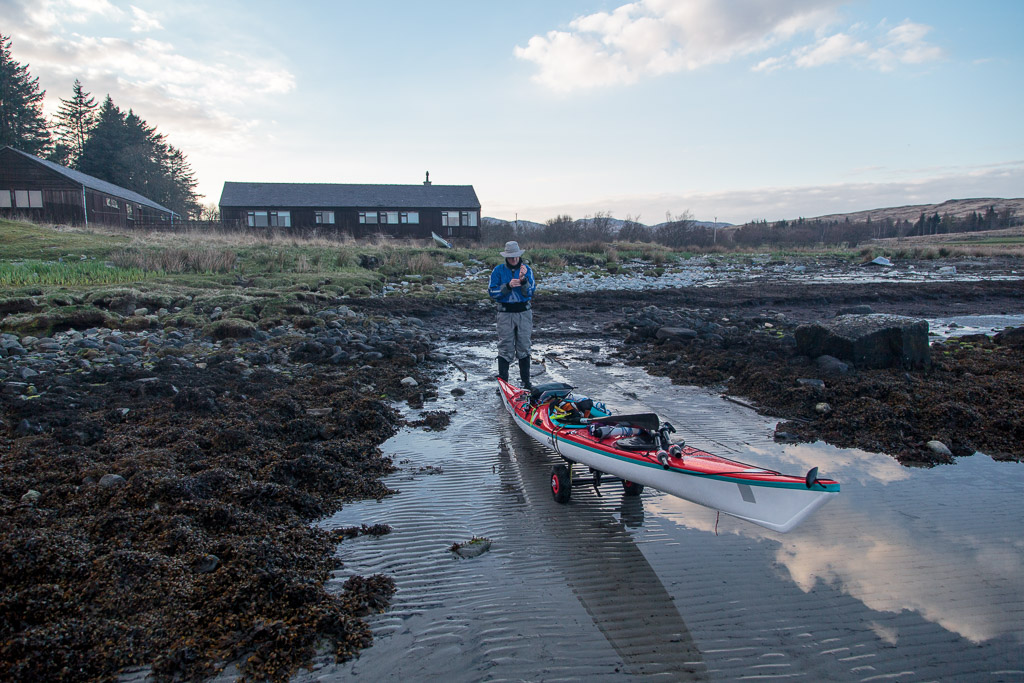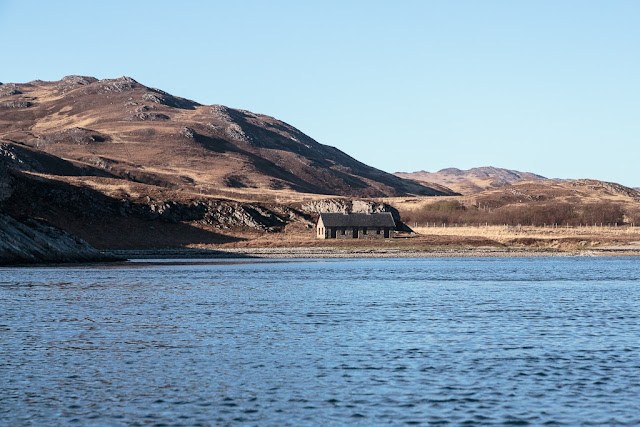There was hardly any wind but it was forecast to get up to F5 from the north in the afternoon when the tide would have turned to north going. This would make for rather unpleasant conditions so we decided to return via Loch Sween to Tayvallich where we had left one of our cars.
We decided to ferry across the Sound of Jura on the ebb. Mike was very keen to visit the MacCormaig Islands but although the current mid channel was only 1.5 knots, it increases as you approach the east side and runs at 4 knots round the MacCormaigs at springs (which it was). I have missed the MacCormaigs before due to underestimating the tide so decided to make use of a NE going eddy which took us 1km up stream before setting off on the crossing.
We then ferried across on 110 degrees magnetic and that...
...soon had us in mid channel and then into...
...an eddy in a kelp bed to north of the isolated rocky isle of Carraig an Daimh where...
...we regrouped to discuss strategy. We were now in an ideal position to run down tide to the MacCormaig Islands but Ian and I both had 200 mile drives home. So we decided to give the MacCormaigs a miss and...
...paddle from the rocky islands towards...
...we landed on a white sand bay to...
...take luncheon. Anywhere else this would have been another spot of Heaven but it did feel a bit of an anticlimax after the amazing beaches on Jura.
After lunch we bid farewell to Dana and with increasing cloud and...
...wind we paddled south...
...with our sails up for the entrance to Loch Sween. We turned our backs to the Paps of Jura for the last time and...
...on the horizon ahead the...
...MacCormaig islands did tempt but...
...we left them for another time and turned into Loch Sween. The ebb tide was still pouring out of the channels at the mouth of the loch but...
...soon we were safely inside paddling north in the shelter of the increasing wind. The last leg of our journey had begun.



























































